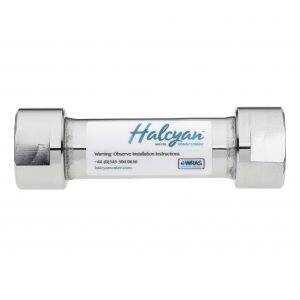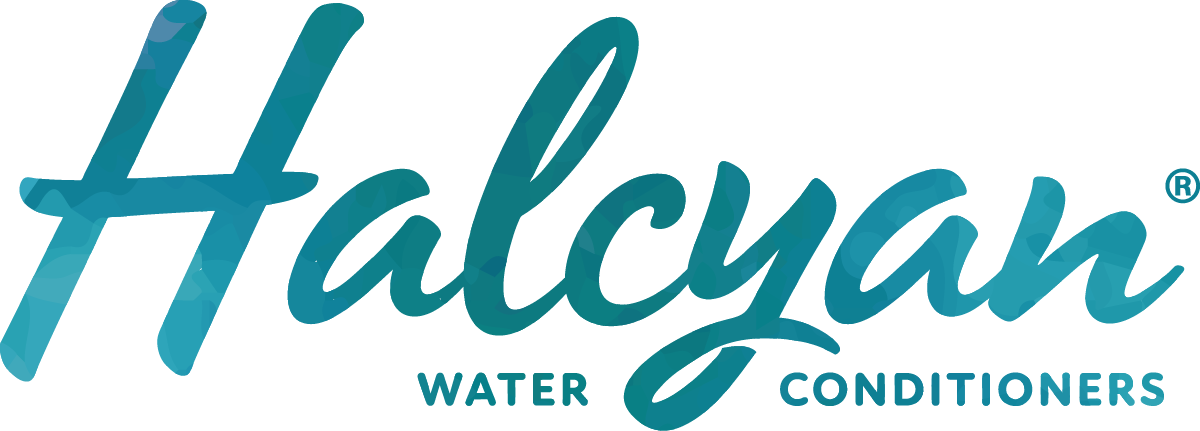Limescale isn’t just a nuisance to clean, you may not know that it can also be a significant drain on your finances. The problem is also very widespread here in the UK with over 60% of households bring supplied with hard water. So how does hardness affect your wallet and how affordable are the solutions?
In this article we’re looking at the money side of the limescale equation and hopefully providing you with a good understanding of what limescale is costing you but also what your options are. Whether it be a traditional salt-based softener or a more sustainable conditioner.
What are Limescale and Hard Water?
Before we get to the meat of the topic let’s take a quick moment to explain limescale and hard water. Limescale is the result of minerals, such as calcium carbonate, bonding out of your water onto surfaces and forming the hard crusty layers you are used to. It is these minerals which make water hard. Hard Water forms when it flows through or sits in mineral rich areas such as a limestone aquifer.
What are the costs?
If you live in a hard water area almost every area of the home that is served by or uses your water will be affected in some way by limescale whether that be a crusty build up on your tap or the layers forming in areas of your pipework.
On energy
The biggest limescale cost is also one of the least visible. Your energy bills are the biggest victim of hard water. But why is this? Limescale forms more rapidly in areas of high temperature, so your boiler heating element, for example is a literal limescale ‘hotspot’. The carbon trust found that 1mm of limescale causes a 7% increase in energy input to meet the same heat demand. As you can imagine an older property will have much more limescale built up than 1mm, meaning a much more significant loss of efficiency.
This issue won’t just affect your boiler but any appliance which relies on hot water whether that be your washing machine, dishwasher or coffee machine. The Battelle study, one of the most comprehensive studies on this issue found that by dealing with limescale you could save between 31-57% off your energy bill depending on your water hardness.

On appliances
Limescale doesn’t just reduce the efficiency of your appliances, however. As the layers of scale build up they will eventually cause equipment such as a boiler to break down. The layers of limescale built up on the heating element cause it to fail. Hard water shortens the lifespan of appliances such as your washing machine by a significant amount, often more than 30%! Replacing a boiler can cost over £1000 not to mention adding washing machine and dishwasher replacement on top of that.
Limescale can also damage appliances in other ways, your washing machine for example can experience limescale build up in the drum itself and in the hoses supplying the machine. This can block supply to the washing machine and cause the motor to work harder during the spin cycle.
The Battelle study also found that low flow showerheads and taps would clog within 7 days of accelerated use. Whilst most households would not be using their fixtures in nearly the same way the result still shows how quickly limescale can begin to cause problems with appliances.
On Cleaning
The most obvious sign of limescale is the build up in your bathroom or kitchen. The stubborn deposits will form on almost any surface but are especially prevalent on taps, shower screens and showerheads. Removing limescale build up is an arduous task as many can attest. Millions are spent by UK households on descaling products each year. It has been suggested an average household in a hard water area will spend approximately £200 a year on limescale cleaning agents such as viacal.
A study on laundry using hard water found that 50% more detergent was needed to clean clothes to the same standard as in washing machines without hard water. A similar effect was observed in a study focussing on dishwashers, which found that dishwasher detergent costs were 70% higher when running the machine using hard water.
What are the solutions and how much do they cost?
So it’s clear that limescale is not something to be ignored. But how do you deal with the problem in a cost-effective way? You can of course clean preventatively but that will only reduce your spend in limescale cleaning materials and requires significant effort. Luckily there are products which you can use which will protect all areas of your home from limescale thus saving you money across all of the areas we’ve just mentioned. So what are they, and how much will they set you back?
How much do Water Softeners Cost?
The most well know solution to hard water is the traditional ion exchange water softener. In a nutshell these systems function by removing the hard water minerals via a process known as ion exchange. Sodium chloride is used to ‘swap’ with the minerals within the water. This is a very simple explanation of the process. As a general rule Water Softeners are the most expensive solution to the limescale problem, both in initial costs and in ongoing running costs.
Water softeners can range from older models which are often cheaper initially but much less efficient and therefore more expensive to run all the way up to the newest twin cylinder metered systems. These are usually very expensive but are much more efficient that the cheaper models and so don’t cost as much to run. Below are some examples of softeners and their purchase prices:
• The Water2buy W2b110 is one of the cheaper softener models and only cost £299 excluding fitting
• The Monarch Midi HE is a midrange system and costs £499 excluding fitting
• The Harveys HV3 is one of the more expensive options on the market and cost £1500-£1800 including fitting
Cost of salt can run up to around £68 a year with one of the more efficient systems. There will also be a further increase in cost associated with higher water usage during the softeners regeneration process.
How much do Water Conditioners Cost?
Water conditioners are much less known than Water Softeners and are also far more diverse. With several different approaches to the limescale problem. The one thing these systems have in common is that they don’t remove the minerals in the water like softeners do. Instead water conditioners target these minerals directly and alter the way they behave, so that they stay in solution rather than bonding onto surfaces. This allows conditioners to preserve the benefits of hard water whilst dealing with the downsides.
Due to their diverse methodologies running costs and performance can vary significantly between systems. Premier conditioners such as Aquabion and Halcyan have no running costs whatsoever throughout their lifespan and are purely fit and forget. Some cheaper systems such as the electronic Eddy will require a minimal uptick in power to run. Below are some example prices for water conditioners –
• Aquasana – The Aquasana is a TAC based system and needs its cartridge replaced every 6 years. Initial cost is £999 excluding installation
• Halcyan – is of course our system and you can read more about how it works here. The Halcyan is a lifetime solution and lasts 30 years with no running costs. Initial cost is £782 excluding installation
• Aquabion – This system uses a sacrificial anode and as such needs replacing every 6-7 years. Initial cost is estimated to be between £450-£550
• Eddy – is an electronic conditioner and is estimated to last 10 years. Initial cost is £139.99
How much do Scale Inhibitors Cost?
Scale inhibitors are superficially very similar to water conditioners. However their results are quite different. These systems are usually magnetic or electrolytic and are designed for use in front of equipment such as a boiler rather than for whole house use. Inhibitors usually don’t last very long and if full coverage is desired you will need to buy several. They exactly what they say on the tin, that is reduce the scale but will do little more than that. Inhibitors will range in price between £20-£55 excluding installation and will usually last 5 years, 10 at the very most.
How Much can you Save?
So you’re now aware of the costs of limescale and of the different available solutions. But what next, how much can you actually save? You’ll forgive us if we use Halcyan in our example. It is the system we know the best, for obvious reasons!
If you live in an average UK household and fit a Halcyan you can save-
• £120 on gas per year
• £58 on electricity per year
• £150-£200 on cleaning products per year
• £39 on laundry detergent per year
So that’s a saving of between £367-£417 a year, with no additional effort on your part! Certainly something to consider!

Final Thoughts
We hope this has provided a useful overview of the costs of limescale, the costs of the solutions and of the savings you could make if you decide to take steps to deal with the problem. There are several other articles linked throughout which cover certain topics in more detail. So please make sure to read through those which are relevant to you. We will also be coming back to this article to make sure it is up to date with all the latest information on the topic!
If you’d like a Halcyan to help tackle your bills why not try our questionnaire and find out which of our systems is right for you?




